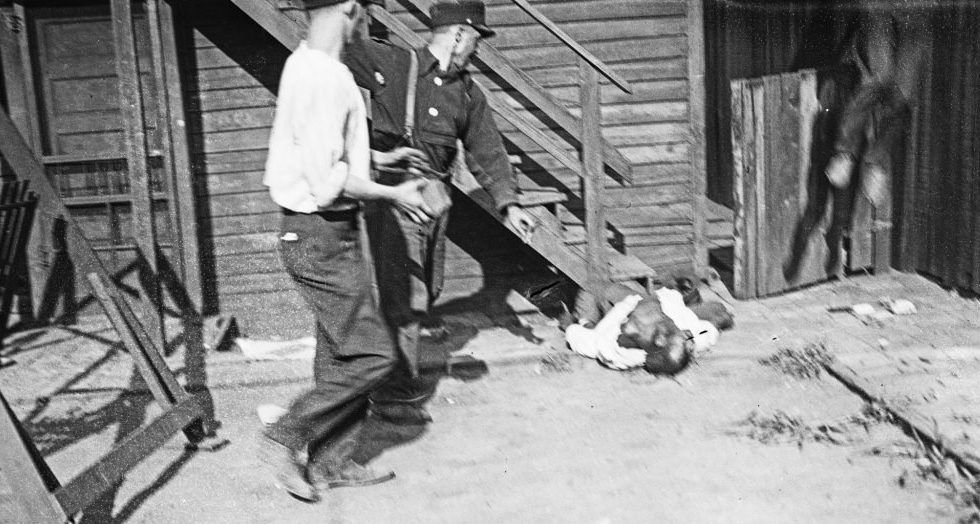For more than a century he was an unknown figure buried in the historic Lincoln Cemetery in Blue Island. After he was the first Black person killed by a white mob during the infamous Chicago Race Riot in 1919, Eugene Williams was buried without a headstone in a poor section of the predominately Black cemetery. Since then, visitors to the cemetery were unable to find Williams’ grave to honor his memory.
But next month, the murdered teenager will finally get a headstone 102 years after he was laid to rest. After a successful fundraising campaign, a group of Chicago residents will hold an official unveiling at 3:30 p.m. on July 24 at Lincoln Cemetery, 12300 S. Kedzie Ave. A wrought iron garden shepherd’s hook with a sign was placed to mark the spot where Williams is buried. Historian Tammy Gibson mounted a campaign that drew donations that grew after the Crusader published a story about the effort. A group of citizens raised $5,000 to buy a permanent marker to honor Williams’ memory.
The unveiling will be the end of a long, two-year campaign that began when Gibson discovered that Williams did not have a headstone when she visited his grave on the 100th Anniversary of the 1919 Race Riot in Chicago.
The headstone and ceremony was expected to occur last year, but the coronavirus pandemic, along with manufacturing delays for the headstone, pushed back the ceremony for a year. For organizers, Williams’ significant place in history will make the effort worth the sacrifices and delays.
The new marker will tell the story of Williams’ life and death.
Half of America was on fire in 1919, known as “Red Summer.” In Washington, D.C., 15 people died following four days of rioting after rumors swirled that a Black man was arrested for raping a white woman. Racial tensions were spreading as President Woodrow Wilson boosted segregation in schools, parks, post offices and many public places.
In Chicago on July 27, 1919, Williams was at the 29th Street Beach. Numerous reports say that Williams was on a raft in Lake Michigan when he crossed the unofficial barrier that separated the city’s “white” and “Black” beaches. That’s when a group of white men threw stones at Williams, knocking him off the raft, causing him to drown.
The Chicago Defender reported that when police refused to arrest one of the white men, George Stauber, a mob of 50 Blacks heard about the incident and marched to the site from the 26th Street Beach. The crowd dispersed, but rioting between Blacks and whites erupted in an area known as “the Black Belt,” where Blacks were confined as thousands moved to Chicago during the Great Migration.
The riots ended on August 3, and 15 whites and 23 Blacks had been killed and more than 500 people injured; an additional 1,000 Black families had lost their homes when they were torched by rioters.
Williams was buried at Lincoln Cemetery in Blue Island on August 4. At the time, the cemetery was just eight years old after being founded by a group of Black funeral directors who wanted an alternative burial ground other than nearby Oak Hill Cemetery.Although he was murdered, Williams’ death certificate listed drowning as the cause of death. The death certificate also listed Charles Jackson of the historic but defunct Jackson Funeral Home as the undertaker.
According to his death certificate, Williams lived at 3921 S. Prairie Ave. His father, John W. Williams, was born in South Carolina, but his mother, who was born in Georgia, was not listed on the death certificate.
That’s all that is known about Williams. When the Chicago Race Riots story is reported today, Williams’ name is rarely mentioned. Some reports simply refer to him as a “Black teenager.” A grainy image for the teenager is the only photo of Williams.
In 2019, activists dedicated a marker in memory of Williams at the 31st Street Beach to mark the 100th Anniversary of the Race Riot.
An official at Lincoln Cemetery said Williams was buried in a single-elect grave, in an inexpensive section of the cemetery that holds the remains of many indigent citizens. Many victims of the 1919 Race Riot are also buried in unmarked graves at Lincoln Cemetery. Organizers are working to raise funds for a monument that will honor and identify them.
John Simpson, a Black Chicago police officer who was killed during the 1919 Race Riot, is also buried at Lincoln Cemetery and has a headstone.
Lincoln Cemetery is the final resting place for many of Chicago’s most prominent Blacks. They include Chicago Crusader founder Balm L. Leavell, Jr., Chicago Defender founder Robert S. Abbott and Gwendolyn Brooks, the nation’s first Black Pulitzer-Prize winning author. Aviator Bessie Coleman and businessman A.R. Leak, the founder of the historic A.R. Leak Funeral Home on Cottage Grove Avenue in Chatham, are also buried at Lincoln Cemetery.
Thanks to the generosity of funding provided by The Field Foundation of Illinois, Inc. in producing this article.







